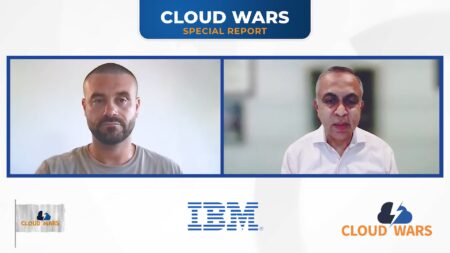Over the past few years, digital transformation made “customer experience” an absolute top business priority and forced massive changes in what IT is and does.
Over the past couple of months, the global WFH mandate is revolutionizing the “employee experience” around when, where and how hundreds of millions of people work and live their everyday lives.
So if digital transformation rocked the IT world—and it surely did—then the new forcing function of COVID-19 is propelling businesses to not only accelerate those sweeping digital reinventions but also weave WFH seamlessly into those efforts.
Along the way, IT leaders and their teams are having to reimagine everything they do and how they do it.
With most people now required to work from home for the foreseeable future, it is extraordinary to imagine the impact on IT infrastructure, the ability of IT professionals to roll out new collaborative technologies, equip and train millions of new WFH-warriors, and secure and maintain network connectivity on a scale never before imagined.
Look at the explosion in the use of Microsoft Teams collaboration apps: Microsoft recently noted that in a 7-day period in mid-March, 12 million new users signed up for Teams—that’s an average of 1.7 million new users per day!
And somehow, IT teams are finding ways to make it all work.
But longer-term, as WFH becomes permanent for a lot of people around the world and as digital transformation efforts accelerate once again, it’s clear that the infrastructure that got us here won’t be modern enough, resilient enough, powerful enough or secure enough to take us into the future.
Because even if we set aside the WFH revolution for a moment, just look at what’s driving digital transformation: it’s the inevitable result of about 1.5 billion people wanting to live digitally enhanced lifestyles.
To stay relevant to those increasingly demanding 1.5 billion consumers, every company in every industry across every region of the world is madly scrambling to become a digital business.
And that means that fitness companies and logistics firms, insurance companies and metal-bending manufacturers, pharmaceutical scientists, utility companies, airlines and many others must find ways to meet all those escalating demands from those customers wielding all of that data-driven buying power.
Indeed, all of those types of businesses plus every other type of enterprise understand that to thrive in today’s digital world requires new skills, new business models, new talent, new processes, new reward systems and new approaches to and interactions with the marketplace.
Not to mention new technologies to enable hybrid cloud, ML, AI, IoT, data analytics, rock-solid cybersecurity and more.
Meanwhile, those business leaders also know they’ve got to achieve all that while moving faster than they’ve ever moved before.
And they know with great certainty that if their highly strategic digital-transformation initiatives are going to succeed—along with those surges of critical WFH initiatives—then those leaders need to find the optimal way to pull together all the disparate parts of the company, including people, process and technology.
Here in June 2020, as many businesses are accelerating their moves to the cloud, there’s no longer any debate about how to achieve all that: hybrid cloud has clearly emerged as the optimal architectural approach.
In a recent research study that we’ll discuss more below, 72% of the 2,650 respondents said that digital transformation has been the biggest driver of cloud deployments, and 64% said that digital transformation is their company’s absolute top business priority.
In building out the indispensable technological underpinnings and advanced IT environments that will be able to massively scale to meet critical front-office demand surges, today’s CEOs, CFOs and CIOs know that the dreaded “rip-and-replace” machinations of yesterday won’t work. They take too long, are too disruptive and are too expensive. Instead, the new business-technology infrastructure for the 2020s has to seamlessly span traditional systems and all the new technologies as well, interwoven into what behaves as a single and cohesive architecture: a technology platform that can support any app for any location.
As many businesses have to rapidly leap into the world of digital transformation, the optimal technology-infrastructure approach of hybrid cloud enables companies to effectively extend their data centers to the cloud. By its very nature, doing so requires companies to span across on-premises systems, public clouds, private clouds, managed clouds, and any and all combinations of those technologies.
Functioning as something like the digital era’s version of the Rosetta Stone, hybrid cloud lets businesses keep the systems they have and refine them to operate with the multiple variations of cloud architectures proliferating today and surge to the cloud in time of critical needs. That means those customers have more time to focus on their urgent business priorities, more money to devote to the highest-value projects, and more people to deploy to those top priorities rather than being tied down with low-value or no-value integration work.
In a recent study of 2,650 technology leaders from across the globe commissioned by enterprise-cloud vendor Nutanix, the findings revealed that hybrid cloud has become the model of choice for business leaders looking to remake themselves for the digital future:
-
85% said hybrid is the “ideal operating model”;
-
49% said that, in spite of the fact that hybrid is still a relatively new set of technologies, it meets all of their needs; and
-
the 3 biggest drivers behind the rapidly rising demand for hybrid cloud are security, flexibility, and the need to accommodate multiple cloud options.
And just as those are essential components for digital transformation, they’re equally vital for the WFH revolution.
At the same time, as with any fairly new and mission-critical set of technologies, hybrid cloud brings with it some challenges, particularly depending on the approach of the vast number of tech vendors offering hybrid-cloud solutions. (And in today’s red-hot market, every single tech vendor is promising that it is and always has been all about hybrid—so buyer beware!).
In my view, the biggest culprit behind the disappointing results some businesses have experienced with early hybrid-cloud trials is the product-centric approach taken by some tech companies offering hybrid solutions.
In their desire to cash in on this vibrant and potentially vast market, some vendors have taken some existing products within their portfolios, slapped a “Hybrid!” logo on them, and pushed them out as a panacea for hybrid challenges they were never truly built to address. Consequently, customers of these “loosely integrated” solutions find themselves limited in technology options as well as restrained in deployment options as well as license use. This is the dreaded lock-in that can potentially add recurring huge sums of support services.
The winners in the hybrid market will be those tech vendors that take the opposite approach: an outside-in perspective that’s centered on what business customers want and need, on their priorities, on their growth strategies, and on their evolving business models. In short, vendors need to allow customers their choice of technology, seamlessly work with whatever deployment options the customer chooses—on-prem, hybrid or multicloud—and allow for flexible licensing without penalty.
For many businesses across every type of industry, the first post-crisis step to take is modernizing their infrastructure by combining the entire stack—compute, storage, networking and virtualization—into a single software-defined platform. This allows the stack—and, more important, the data within it—to be accessed by the relevant businesspeople across the organization rather than exclusively by system administrators in datacenter silos.
By adding turnkey, industry-standard servers rather than complex and disparate legacy infrastructure, the new foundation is perfectly suited to handle adaptive machine-learning tools that automate the entire system and manage it intelligently throughout its lifecycle. With an integrated infrastructure and streamlined workflows, businesses will be well positioned to quickly and massively scale IT to address any front-office surges in times of crisis.
That’s the only way companies can achieve the operational agility and speed to achieve the escape velocity required to accelerate innovation and move as fast as the markets around them.
Final thoughts
In Part 1 of this 3-part series, called Reports of the End of On-Premises IT Have Been Greatly Exaggerated, we described the long and useful lives that properly oriented data centers and on-premises IT can have in the digital world.
And in Part 2, called In WFH Era, Can New Resilient IT Infrastructure Pay for Itself in 9 Months?, we described how this new software-driven approach in the Nutanix Enterprise Cloud can deliver not only the business agility you need but also a rapid and impressive ROI.
And now with Part 3, we’ve laid out the case for hybrid cloud as the optimal path for not only digital transformation but also for the wholly unseen but equally transformative phenomenon of WFH.
We hope this has given you some things to think about, and thanks for your time.
This article is brought to you by Nutanix.








